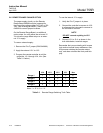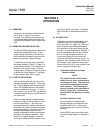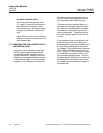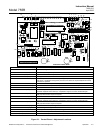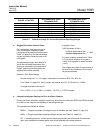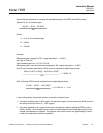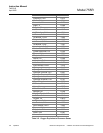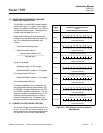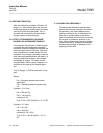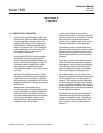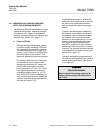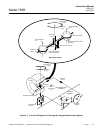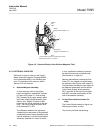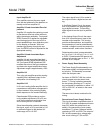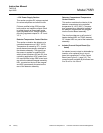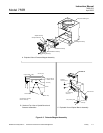
Instruction Manual
748213-S
April 2002
3-8 Operation Rosemount Analytical Inc. A Division of Emerson Process Management
Model 755R
3-8 ROUTINE OPERATION
After the calibration procedure of Section 3-4
(page 3-1), admit sample gas to the analyzer
at the same pressure and the same flow rates
used for the zero and span gases. The in-
strument will now continuously indicate the
oxygen content of the sample gas.
3-9 EFFECT OF BAROMETRIC PRESSURE
CHANGES ON INSTRUMENT READOUT
If the analyzer exhaust port is vented through
a suitable absolute backpressure regulator,
barometric pressure changes do not affect the
percent oxygen readout. However, if the ana-
lyzer exhaust port is vented directly to the at-
mosphere, any change in barometric pressure
after instrument standardization will result in a
directly proportional change in the indicated
percentage of oxygen. This effect may be
compensated in various ways. If desired, cor-
rection may be made by the following equa-
tion:
True % Oxygen = (Pst/Pan)(Indicated % Oxy-
gen)
Where:
Pst = Operating pressure during stan-
dardization
Pan = Operating pressure sample analy-
sis
Example: U.S. Units
Pst = 760 mm Hg
Pan = 740 mm Hg
Indicated % O2
True % O2 = (760/740)(40%) = 41.1% O2
Example: S.I. Units
Pst = 101 kPa
Pan = 98.2 kPa
Indicated % O2 = 40%
True % O2 = (101/98.2)(40%) = 41.1%
O2
3-10 CALIBRATION FREQUENCY
The appropriate calibration interval will de-
pend on the accuracy required in the particu-
lar application, and is best determined by
keeping a calibration log. If the analyzer ex-
haust port is vented directly to the atmos-
phere, the greatest source of error is normally
the variation in barometric pressure. If de-
sired, effects of barometric pressure variation
can be minimized by calibrating immediately
before taking readings, for example, at the
beginning of each shift.



